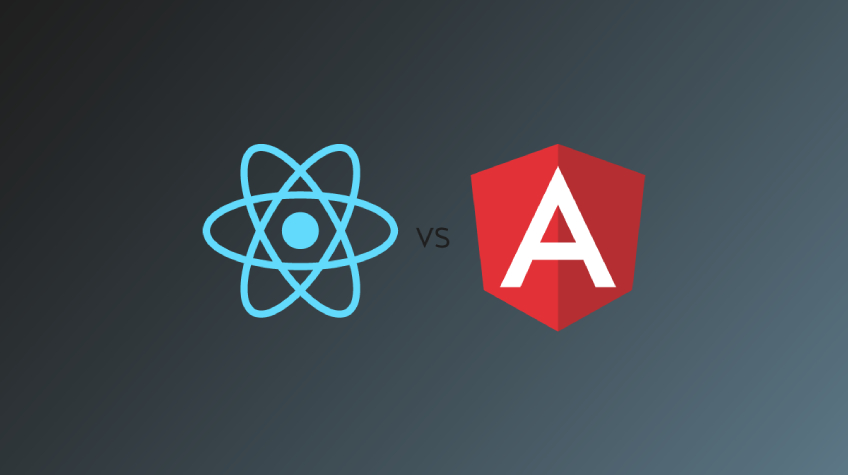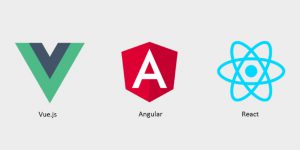
React JS vs Angular JS are two of the most popular front-end development frameworks for building user interfaces for web applications and mobile apps. They both have pros and cons, and it can be difficult to decide which is the best option for your next IoT product development project.
In this blog post, we’ll compare the two frameworks head-to-head and determine which is better suited for your needs. We’ll also discuss some of the common uses for each framework and provide a few tips on choosing the right one for your project.
What is React JS?
React is a JavaScript library for creating user interfaces. It enables developers to create reusable components, which makes it easier to build complex UIs. React also allows you to handle state and reactivity programmatically, making it a powerful tool for building interactive web applications and mobile apps.
What is Angular JS?
Angular.JS is an open-source front-end development framework based on the MVC pattern. It lets you create rich user interfaces by using directives and controllers and perform various animations in response to user input. Additionally, Angular provides built-in services like data binding and animations that make it easy to create complex UIs.
Benefits of React JS
- A rich and open Tool Set- React is built on the React JS library, which provides a rich set of features for building user interfaces.
- Easy to Use- React is easy to learn and use, making it a good choice for novice developers.
- Flexible- React allows you to create complex UIs using reusable components and declarative programming techniques.
- Powerful State Management -react enables you to handle state programmatically, making it easier to build interactive applications and mobile apps with reactive elements.
- Reactive Elements- React handles reactive elements, such as user input and data updates.
- Fast Development- react is fast and easy to use, making it a good choice for web applications and mobile apps.
- Scalability -react can be scaled up or down depending on your needs, making it a suitable option for large and small projects.
- Cross-Platform Support- React works with all major browsers, making it compatible with desktop and mobile devices.
- Commercial Support -react also has commercial Support available from companies like Facebook and Google.
React JS is a popular and powerful front-end development framework that offers a rich set of features for building user interfaces. It is easy to learn and use, making it an ideal choice for novice developers. React also provides powerful state management capabilities and the ability to handle reactive elements, making it well-suited for web applications and mobile apps.
Benefits of Angular JS
- Supported by Google- Angular.JS is supported by Google, meaning it has access to a vast array of resources and expertise.
- Comprehensive- Angular.JS is comprehensive in terms of its features and capabilities, offering everything from data binding to MVVM (Model View Controller).
- Modular- Angular.JS is modular, which makes it easy to manage and extend. Moreover, the different modules can be used separately or together, depending on your needs.
- Robustness- Because Google backs angular js, it has been rigorously tested and proven robust and reliable.
- Cross-Platform Support- Angular.JS works with all major browsers, making it compatible with desktop and mobile devices.
- Rapid Development- Because angular js is a rapid development framework, it facilitates fast prototyping and quick iteration.
- Easy to Use- Angular.JS is easy to use, even for novice developers; the documentation is comprehensive and well organized.
- With Angular.JS, you can build high-quality, responsive web applications and mobile apps. It is supported by Google and provides a comprehensive set of features and capabilities. Additionally, it is modular, making it easy to manage and extend.
- Robustness and cross-platform Support make Angular.JS a strong choice for web applications and mobile apps.
Things to consider while selecting between ReactJS or Angular JS
1. ReactJS is popular for developing fast and mobile-friendly applications
Angular.JS is known for its tight integration with the web platform, making it a good choice if you need to build robust and responsive websites or apps. Additionally, Angular JS has been designed from the ground up to handle big data processing responsibilities well.
2. ReactJS supports stateless components, while Angular JS supports both stateful and stateless components
Stateless components are generally faster because there’s no need to keep track of component dependencies (properties that must be set before the component can run ). However, stateless components cannot depend on other modules within the same application.
Stateful components are more complex to write but can be more reliable because they maintain knowledge of their children’s components’ current state. This allows for things like subscribing to events and firing off new requests once the data has been updated in a child component.
3. ReactJS is popular for creating user interfaces, while Angular JS is better suited for developing server-side applications or designing large-scale single-page applications (SPA)
ReactJS UI frameworks such as react-router make building modular and reusable user interfaces easy. Angular.JS, on the other hand, is better suited for developing enterprise-grade web applications or front-end widgets that you can use across multiple websites.
Related Post: Top 10 Web Development Frameworks
4. ReactJS has less Support for Undo/Redo operations than Angular JS does
This one’s a no-brainer – if you need to do lots of undoing and redoing your work, React might not be the best choice for you! On the other hand, if you’re looking to keep your development process as fast and error-free as possible, ReactJS may be a better fit.
5. ReactJS is slower when it comes to updates than Angular JS
Again, this one’s self-explanatory! When you update a React component, it will typically take longer for the update to propagate through the entire application than when you update an Angular.JS component.
6. ReactJS is not as well-supported when it comes to third-party libraries as Angular JS
This one’s a tough call. On the one hand, React does have less Support for 3rd party libraries than Angular does. However, this may change, especially considering that React has become more popular in recent years! If you need access to specific third-party library functionality, then React is your better choice.
7. ReactJS tends to be more complex to learn than Angular JS
This is a subjective judgment! Some people find ReactJS more complex than Angular, while others find it much easier to understand. Ultimately, the key thing you need to remember is that whichever framework you choose needs time and effort to learn; otherwise, your development process will suffer.
Conclusion:
In 2025, it will be increasingly important for businesses to develop products that comply with the growing demand for IoT. ReactJS and Angular.JS are the most popular JavaScript frameworks for developing IoT products. Their respective strengths and weaknesses will be worth considering when deciding which framework to use.
ReactJS is well-suited for developing interactive applications and web interfaces, while Angular.JS is better suited for developing more traditional web applications. Both frameworks have advantages and disadvantages, but the overall verdict is that both are powerful and versatile tools that can help you create high-quality IoT products.
If you’re interested in learning more about ReactJS or Angular.JS, contact Flutter App Development Company in India. We hope this article has helped you make an informed decision about which framework to use for IoT product development in 2025.






